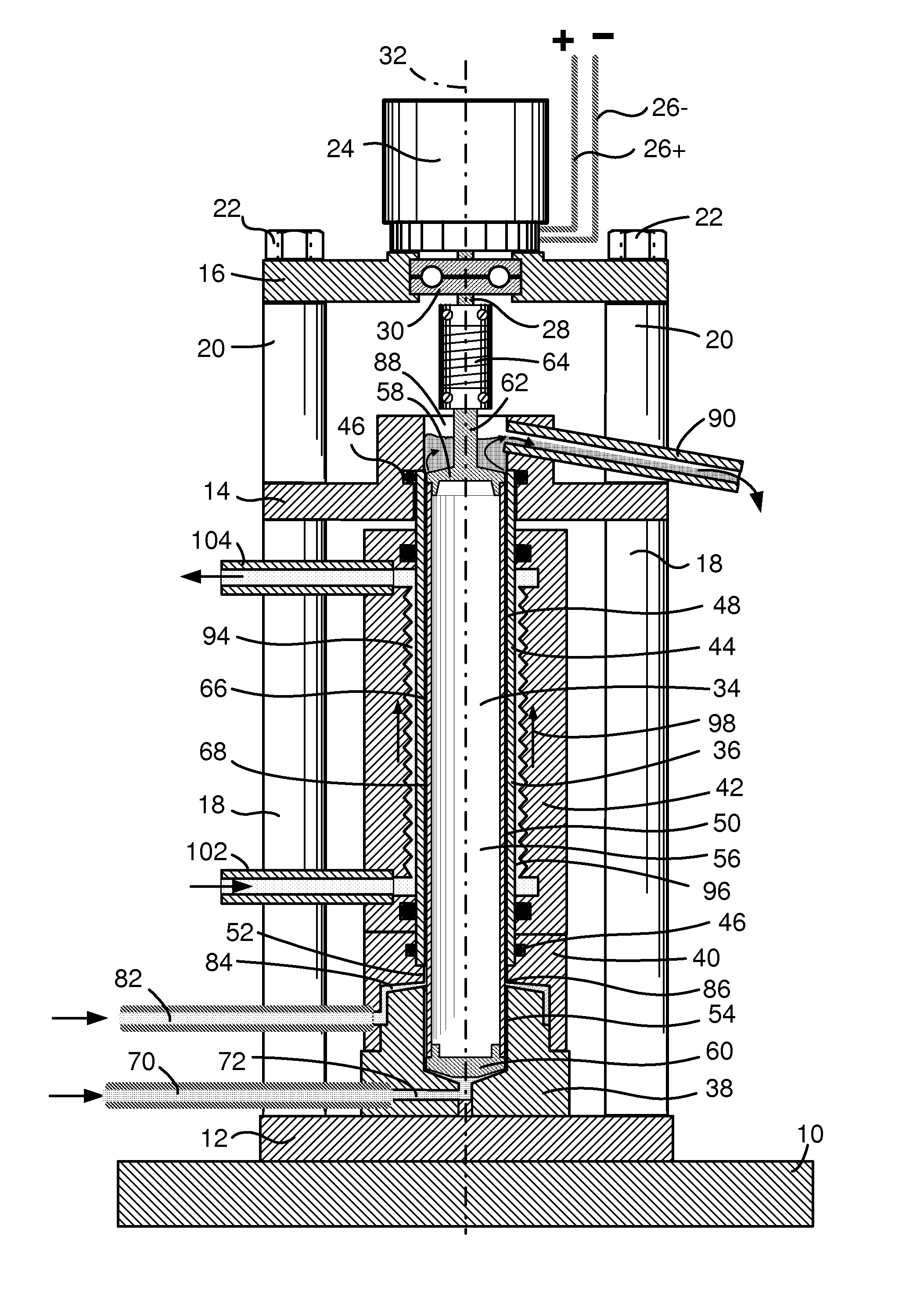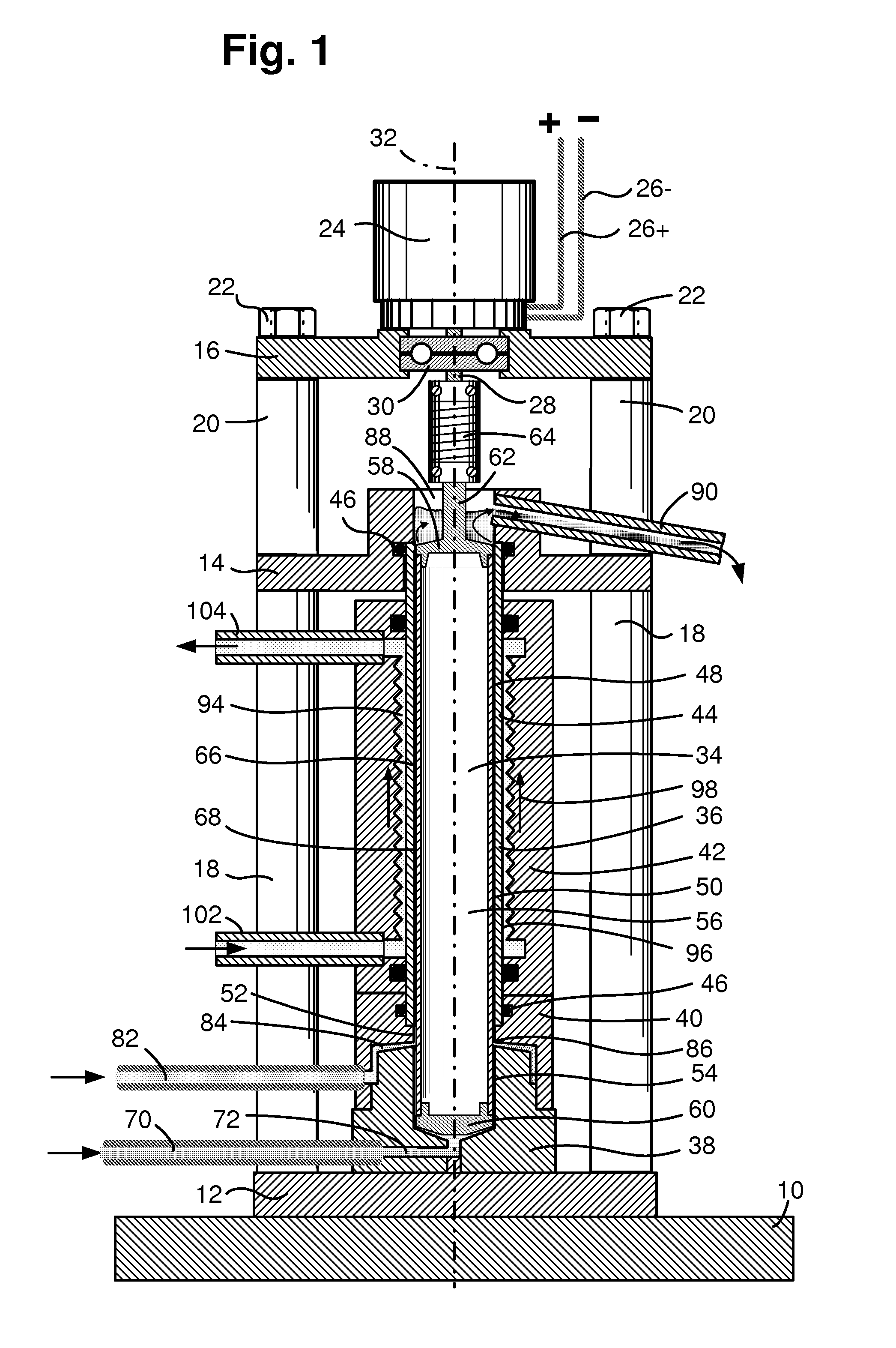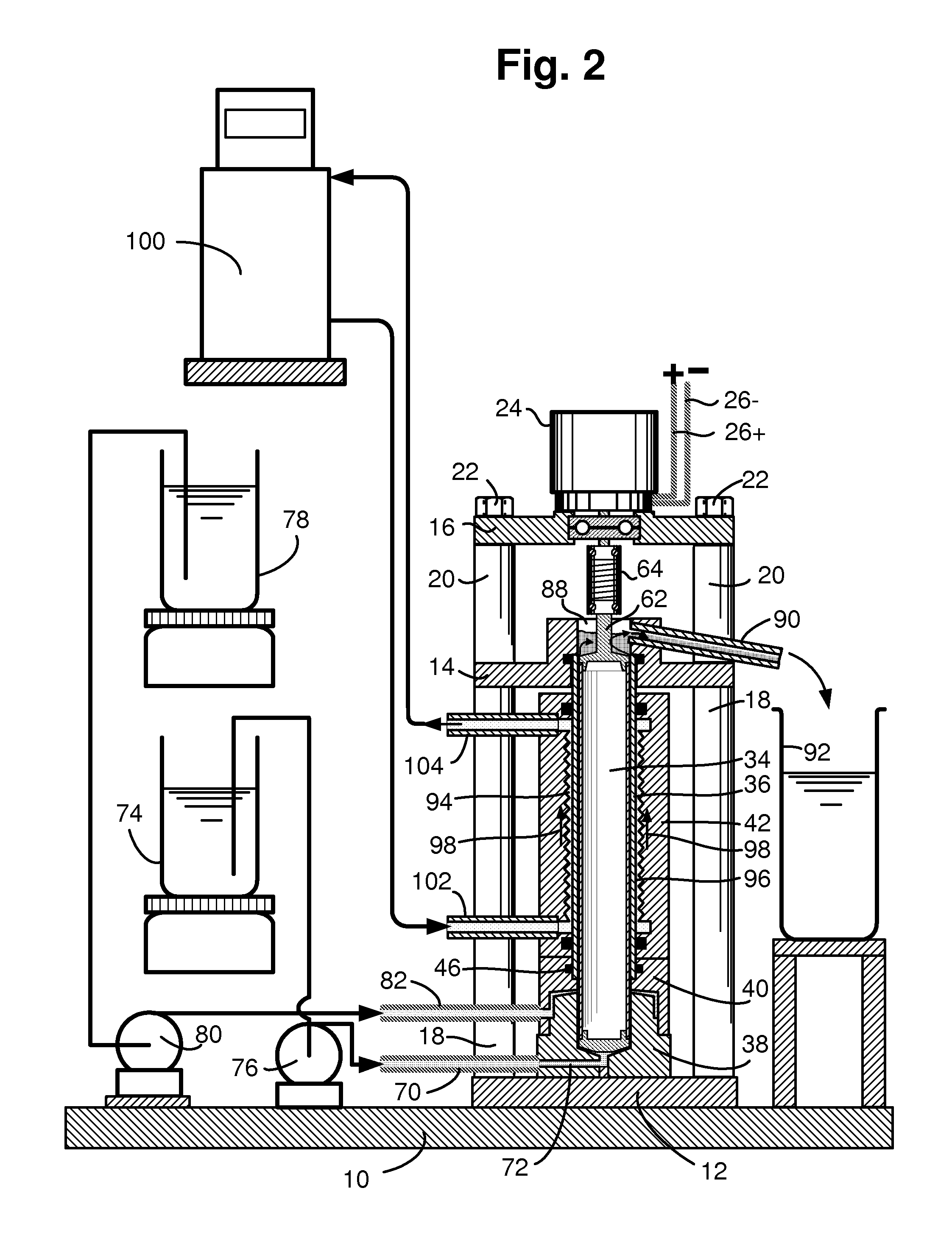Heat exchange apparatus
a heat exchange apparatus and heat exchange technology, applied in indirect heat exchangers, lighting and heating apparatus, transportation and packaging, etc., can solve the problems of reducing the output of wanted side products, requiring expensive further processing to remove unwanted products or products, and affecting the efficiency of heat exchange, so as to achieve the effect of improving the rate of heat exchang
- Summary
- Abstract
- Description
- Claims
- Application Information
AI Technical Summary
Benefits of technology
Problems solved by technology
Method used
Image
Examples
Embodiment Construction
[0027]The main frame of the apparatus comprises a flat main base member 10 on which is disposed a flat sub-base plate 12, a spaced parallel intermediate and stator support plate 14 and a spaced parallel uppermost and motor support plate 16. The members 12 and 14 are held spaced apart by interposed tubular members 18 (only two are shown), and the members 14 and 16 are held spaced apart by interposed tubular members 20 (again only two are shown), the whole assembly being held in tight engagement by tie-rods 22, each of which passes through a respective pair of tubular members 18 and 20. A controllable speed electric drive motor 24, which receives its operating electric power through leads 26+ and 26−, is mounted on the support plate 16 with its drive shaft 28 extending vertically downward through a bearing 30, the length of the drive shaft being sufficient for it to extend below the support plate 16. The axis of rotation of the motor and its shaft is vertical and is indicated by the b...
PUM
 Login to View More
Login to View More Abstract
Description
Claims
Application Information
 Login to View More
Login to View More - R&D
- Intellectual Property
- Life Sciences
- Materials
- Tech Scout
- Unparalleled Data Quality
- Higher Quality Content
- 60% Fewer Hallucinations
Browse by: Latest US Patents, China's latest patents, Technical Efficacy Thesaurus, Application Domain, Technology Topic, Popular Technical Reports.
© 2025 PatSnap. All rights reserved.Legal|Privacy policy|Modern Slavery Act Transparency Statement|Sitemap|About US| Contact US: help@patsnap.com



